#John Batchelor
Text
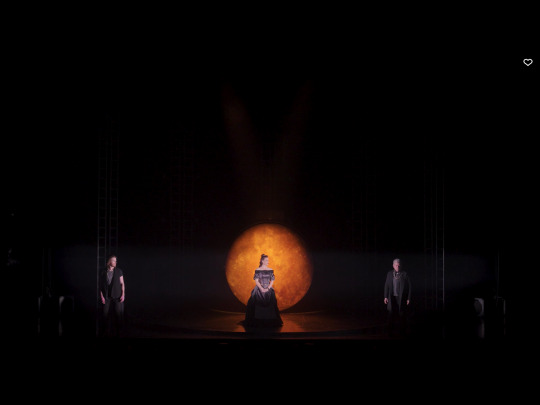



The staging in this show is Incredible. Takes my breath away every time.
(Please excuse the single auto-generated subtitle. And the other iPad nonsense in the screenshots)
#holding achilles#patroclus#achilles#agamemnon#montaigne#thetis#menelaus#odysseus#Chiron#briseis#stephen madsen#karl richmond#christy tran#Heracles the bear#Thomas Larkin#Priam#Jennifer vuletic#John Batchelor#nic prior#lauren jackson
22 notes
·
View notes
Photo

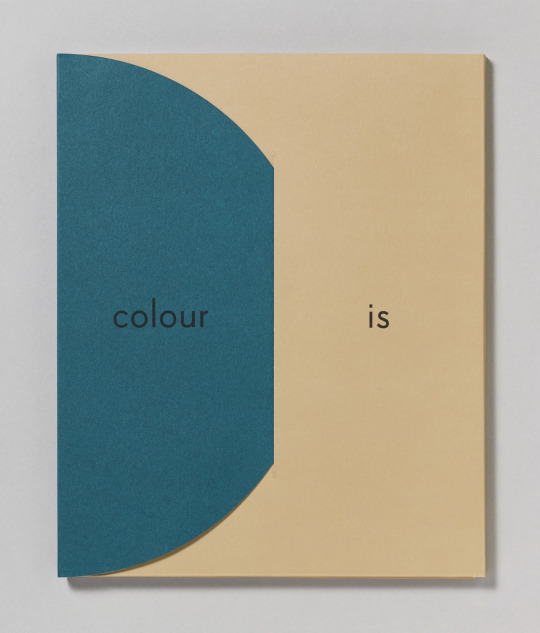



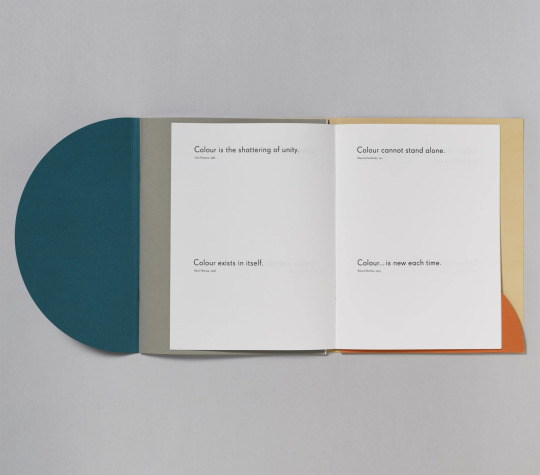
Colour is, Text by David Batchelor, Waddington Custot, London, 2017 [Exhibition: March 1 – April 28, 2017]. Designed by A Practice for Everyday Life. Feat.: Etel Adnan, Josef Albers, David Annesley, David Batchelor, Anthony Caro, Ian Davenport, Paul Feeley, Sam Gilliam, Peter Halley, John Hoyland, Donald Judd, Joseph Kosuth, Jeremy Moon, Kenneth Noland, Hélio Oiticica, Yuko Shiraishi, Frank Stella, Joe Tilson and William Tucker
(on the way of Art Books & Ephemera)
#graphic design#art#drawing#sculpture#mixed media#exhibition#catalogue#catalog#cover#david batchelor#etel adnan#josef albers#david annesley#anthony caro#ian davenport#paul feeley#sam gilliam#peter halley#john hoyland#donald judd#joseph kosuth#jeremy moon#kenneth noland#hélio oiticica#yuko shiraishi#frank stella#joe tilson#william tucker#a practice for everyday life#waddington custot
97 notes
·
View notes
Quote
Most traditional of the cartoon producers are Halas and Batchelor, whose Animal Farm was in the Disney tradition. Their graphic progress since then may be exemplified by the Hoffnung Symphony Orchestra, a bright, après-Punch piece spiritedly solving the problem which gave every Hollywood cartoon unit, from Disney to U.P.A., such difficulty; how to reconcile emphatic laugh gags with smartish-post-Disney graphics. Their Automania 2000 is a Tati-spirited spoof on technology and piecemeal planning, with cars enjoying a population explosion and covering the globe with a mile-high traffic jam.
Raymond Durgnat, A Mirror for England
#raymond durgnat#a mirror for england: british movies from austerity to affluence#john halas#joy batchelor#jacques tati
0 notes
Text





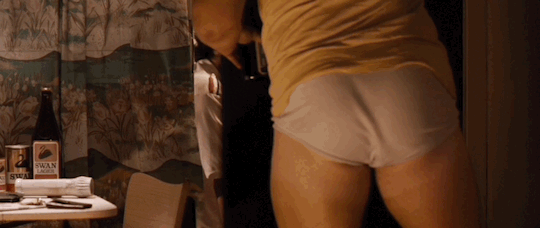
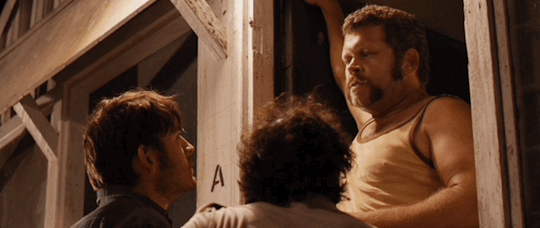
John Batchelor in Red Dog (2011)
260 notes
·
View notes
Text
Alright, y'all, I need some help
I'm doing research for the Ainu Hanzo headcanon, specifically regarding the naming customs, and I remembered hearing about a custom to call babies by an impermanent nickname that usually meant something like "little excrement" but I couldn't find a source anywhere to confirm that it was a real custom other than fucking fandom wiki (which is not a reputable source)
I have found a source that confirms this custom exists (Ainu: Spirit of a Northern People, chapter 38) but it does not offer any examples of what those nicknames were.
Every example I have found comes from a source I can't trust bc it's either fandom wiki, has no bibliography, wasn't written by or with an Ainu person, or all three. Of those examples, Shipo, Poyshi, Shion, Ayay, Shontaku and Setashi, I have only seen the first four recur across multiple sites, and Ayay and Shion are the only ones I can confirm are actually words through the book An Ainu-English-Japanese dictionary (including a grammar of the Ainu language) by John Batchelor who is ASTONISHINGLY biased as an author (he has another book that goes into Ainu culture and ways of life, The Ainu and Their Folk-Lore which just reeks of Missionary Colonialism) and he just translates both as Baby
Does anybody know of any sources that discuss Ainu naming customs, specifically baby names, in detail?
Or any dictionaries that translate the word Excrement bc the dictionary I have doesn't translate it or any of it's synonyms (I have Checked) other than Dung which it translates as Osoma, which isn't any of the options I've seen before so I have no idea if it can be used in this context or not?
#please help#I've already spent like five hours on this and I just need it for ONE thing#Ainu#Ainu Languange#Ainu Names#hanzo is ainu#mortal kombat 11#hanzo hasashi
15 notes
·
View notes
Text
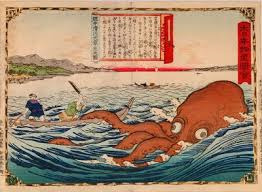
Cryptid of the Day: Akkorokamui
Description: Akkorokamui is a giant octopus of Ainu folklore, which supposedly lurks in the Funka Bay in Hokkaido, and has even been seen in Taiwan and Korea since the 19th century. Missionary John Batchelor recounted an encounter that three men had with the beast, claiming that the men caught the octopus while hunting sword fish.
75 notes
·
View notes
Photo


Great works of art in all cultures succeed in capturing within the constraints of their form both the pathos of anguish and a vision of its resolution. Take, for example, the languorous sentences of Proust or the haiku of Basho, the late quartets and sonatas of Beethoven, the tragicomic brushwork of Sengai or the daunting canvases of Rothko, the luminous self-portraits of Rembrandt and Hakuin. Such works achieve their resolution not through consoling or romantic images whereby anguish is transcended. They accept anguish without being overwhelmed by it. They reveal anguish as that which gives beauty its dignity and depth.
Excerpt from Buddhism Without Beliefs, by Stephen Batchelor
Photo of the Rothko Chapel, a non-denominational chapel in Houston, Texas, founded by John and Dominique de Menil
21 notes
·
View notes
Text
Mintuci
The mintuci is a water sprite or an aquatic supernatural creature, a half-man-half-beast, told in stories of Ainu mythology and folklore. It is also considered a variant of the kappa and therefore a type of yōkai.
The name is mintuci according to modern Ainu orthography, but it is also commonly spelled mintsuchi in folkloric study literature written in Japanese.
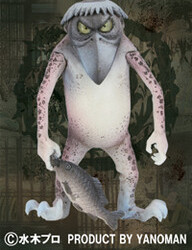
The mintuci has been defined as "fabulous animal", purported to be "half human and half animal and to inhabit lakes and rivers" in the Ainu dictionary c. 1900 compiled by British missionary John Batchelor. But he also perceived it as a type of water spirit, and stated it was considered by the Ainu to be a type of "koshimpuk" (normalized spelling: kosimpuk, kosimpu), which is a word glossed as meaning 'fairy' or 'daemon'.
Others characterize it as a yōkai, closely akin to the kappa, but others point out that there are legends peculiar to the Ainu that are attached to the mintuci, not seen in kappa legends.
The Ainu word mintuci is considered to be borrowed from the Japanese word mizuchi (or variants thereof) that are local appellations for the kappa, ultimately deriving from the term mizuchi which signifies a type of dragon.
However, Batchelor has given a strictly Ainu etymology for mintuci, explaining it as a compound of mimi (or mim) meaning 'flesh' and tumunci meaning 'devil'.
According to some Ainu elders, mintuci was a name that people on the Japanese mainland used to refer to kappa, and the correct Ainu term was Shiri-sham-ainu literally denoting a "mountain-side-person". Its bald-headedness and reference to the mountain-side suggests a hypothetical connection to, or conflation with, the generic Japanese mountain deity, the Yama-no-Kami.
The name manifests local variation, and the creature is called mimtuci in the Chitose dialect and mintoci in the Ishikari region.
The creature is known by the name hundoci or slight variants thereof in the Tokachi and Kurshiro regions. It is said to make an occasional grunting noise like "hunn", according to the folklore of the town of Ikeda in the eastern part of the Tokachi Plain, where the hundoci appears the guise of a diminutive old person of indeterminate gender.
The kappa of the Ainu may otherwise be called "mintoci kamuy, nintoci kamuy, or huntoci kamuy".
The mintuci are reputedly of the height and stature of a 3-year old to a 12 or 13 year-old human, and it has a head of hair without a "plate" like the kappa (though having fleshy, bald patches on their heads), and though they may be bald-headed the males and females still can be distinguished, or so it has been told in tale where the mintuci appears in the Ishikari River.
Its skin is purplish or reddish, with sea turtle-like texture, and they have either bird-like feet or four sets of hooves, with one supposed witness discovering sickle-like footprints. There also exists oral tradition that both its arms are attached, so that tugging one arm makes the other become shorter, or pulling on one arm hard enough will cause both arms to be ripped out; however, this curious anatomical lore may not be original, since it is told of the kappa in some regions of Japan.
The mintuci are said to hunt people and livestock by dragging them under water, but this prankishness is also a trait frequently ascribed to the kappa, cf. the motif of the kappa komabiki ("the water-imp dragging a horse into the water").
People may also become possessed by the mintuci, and women possessed by one may attempt to seduce men. According to a legend circulating in Kushiro, on a foggy nights, a victim may detect what seems to be human presence that has abruptly appeared ahead of him, and trying to engage this entity in conversation will go unanswered; it continues to walk onward until the victim notices the odd bird-like footprints, and just then the mintuci's shadow would vanish and come around from behind, dragging the victim into the water.
Although the mintuci is generally considered an "evil dispositioned" type of fabulous aquatic creature, reputed to "disembowel and devour human beings when they catch them", there are also benevolent types called pirika mintuci (lit. "good mintuci") which inhabit the mountains according to John Batchelor.
It is not strictly just the mountain type which assists humans (bringing bounty of the mountain, i.e., luck of hunting), because the aquatic mintuci are also known to help (bestow bounties of the waters, i.e., luck in fishing), and there are also dangerous consequences when the mountain mintuci is crossed, as detailed below:
As the mintuci is a deity which controls the fish, it may bring luck to fishermen, but at a price, because as long as it is present it will be responsible for an increase in deaths by drowning. In an anecdote set in the Ishikari region, the mintuci allowed a bountiful catch of fish, but it was sure to take several lives each year, so that the people begged it to move elsewhere to the town of Shizunai in Hidaka (now incorporated into the town of Shinhidaka, Hokkaido), and as a result, the drownings ceased, but the fish catch plummeted afterwards. In another tale, a mintuci became the adopted husband and came to live with the bride's family in the hamlet of Chikabumi in Asahikawa, and he brought about a rich harvest of fish, but was discovered to be the cause of increased drownings in the rivers, so was expelled, and thereafter it moved to Shibichari River (in town of Shizunai). The prosperity of Asahikawa and Saru River was attributed to mintuci protection.
The mintuci also blesses the hunter, rewarding him with game in plenitude according to folk tradition. According to one piece of lore, the chieftain of the mintuci is called mintuci-tono, and he is a bearer of bow and arrows, known to aid humans in need, or giving the gift of bow and arrows, but in return demands offering of sake or hei type ornaments, and people are obliged to comply. But the ornament in question should not be the inaw usually offered to the gods, but a more simplified version.
The mintuci is thought capable of transforming into a youth and becoming an adopted husband at a home with only daughters, bringing about fortune and luck of the hunt, but once the village incurs his wrath, he will depart, absconding with the community's food spirit, causing famine. There are tales of the mintuci acting as guardians for humans in Asahikawa and Saru River areas. In one tale set in Saru River, a mintuci who helped the chieftain carry his load demanded a banquet afterwards, rewarding his hosts with a golden tobacco case said to be an amulet of protection from night raids. When another village attacked, those who participated in providing hospitality to the spirit were intact, but those who failed to come to the gathering all lost their lives. The motif of the golden tobacco case amulet as a gift also occurs in a variant tale entitled "Kappa no hanashi" where the benefactor is the kappa-deity or nintoci kamuy.
According to one origin myth, long ago during the epoch when the god Okikurumi descended on earth and ruled over the Ainu (human) world, there came far from the sea the smallpox divinity known to the Ainu as Patum-kamui, and many succumbed to disease. Okikurmi then created a set of 61 Chishinap-kamui made by braiding mugworts into a cross shape, breathing life into them to fight the smallpox divinity/demon. All but one of the puppets drowned and grand general who remained managed to defeat the smallpox demon. The puppets that drowned thereafter became the mintuci kamuy, helping people in case of illness or adversity.
A (less mythologized) and historical folk tradition blames the arrival of the pox to Japanese traders and their merchant ships. According to tradition, the Smallpox Deity (smallpox demon) sneaked on the bezai boats which the Japanese sailed into Hokkaido to establish trade relations with the Ainu during the Edo period. A smallpox outbreak killed many Ainu. And this led to the custom of creating the weed dolls for protection from this disease, namely, the Ti-sinap-kamuy was not invented by a god, but by the Ainu people. In fact, the literal meaning of Ti-sinap-kamuy is 'god whom we bundled/bound'.
11 notes
·
View notes
Text


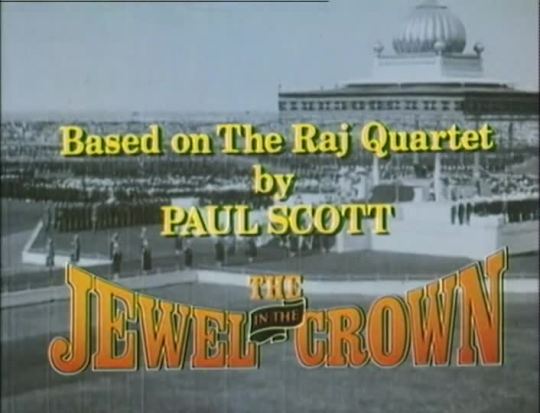


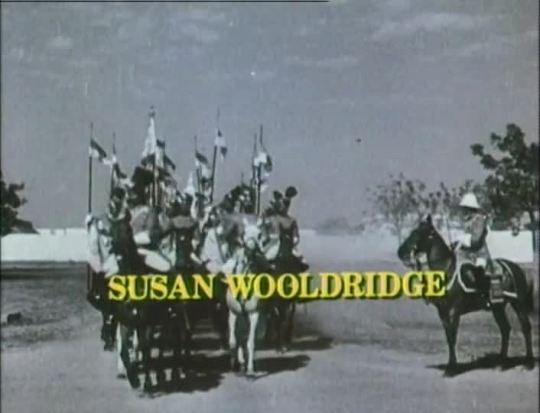

The Jewel in the Crown - ITV - January 9, 1984 - April 3, 1984
Period Drama (14 episodes)
Running Time: 60 minutes
Stars:
Peggy Ashcroft as Barbara Batchelor
Janet Henfrey as Edwina Crane
Derrick Branche as Ahmed Kasim
Charles Dance as Sgt Guy Perron
Geraldine James as Sarah Layton
Rachel Kempson as Lady Manners
Art Malik as Hari Kumar
Wendy Morgan as Susan Layton
Judy Parfitt as Mildred Layton
Tim Pigott-Smith as Supt./Capt/Maj/Lt Col Ronald Merrick
Eric Porter as Count Dmitri Bronowsky
Susan Wooldridge as Daphne Manners
Ralph Arliss as Capt. Samuels
Geoffrey Beevers as Capt Kevin Coley
James Bree as Maj/Lt Col Arthur Grace
Jeremy Child as Robin White
Warren Clarke as Cpl "Sophie" Dixon
Rowena Cooper as Connie White
Anna Cropper as Nicky Paynton
Fabia Drake as Mabel Layton
Nicholas Farrell as Edward "Teddie" Bingham
Matyelok Gibbs as Sister Ludmila Smith
Carol Gillies as Clarissa Peplow
Rennee Goddard as Dr Anna Klaus
Jonathan Haley and Nicholas Haley as Edward Bingham Jr
Saeed Jaffrey as Ahmed Ali Gaffur Kasim Bahadur, the Nawab of Mirat
Karan Kapoor as Colin Lindsey
Rashid Karapiet as Judge Menen
Kamini Kaushal as Shalini Sengupta
Rosemary Leach as Fenella "Fenny" Grace
David Leland as Capt Leonard Purvis
Nicholas Le Prevost as Capt Nigel Rowan
Marne Maitland as Pandit Baba
Jamila Massey as Maharanee Aimee
Zia Mohyeddin as Mohammad Ali Kasim
Salmaan Peerzada as Sayed Kasim
Om Puri as Mr de Souza
Stephen Riddle as Capt Dicky Beauvais
Norman Rutherford as Edgar Maybrick
Dev Sagoo as S.V. Vidyasagar
Zohra Sehgal as Lady Lili Chatterjee
Frederick Treves as Lt Col John Layton
Stuart Wilson as Capt James Clark
Leslie Grantham as Signals Sergeant
#The Jewel in the Crown#TV#Period Drama#ITV#1984#1980's#Tim Pigott-Smith#Susan Wooldridge#Art Malik#Charles Dance#Geraldine James
4 notes
·
View notes
Text

Akkorokamui
The Akkorokamui, also known as the Ashketanne Mat (long-fingered woman) is a part-human-part-octopus creature from Aino and Shinto folklore. The Akkorokamui is said to lurk in Funka Bay in Hokkaidō, Japan.
~~~ Legend ~~~~
Millennia ago, vengeful spirits cursed Rebunge, a villager of Abuta Toyoura, to see the destruction of his town. They sent a part-spider-part-human creature, called Yaoshikepu , to fulfill the curse. Yaoshikepu ran rampant throughout the town, causing destruction and slaughtering so many that the streets turned with crimson blood. After hearing the townsfolk’s prayers, the sea kami, Repunkamui, transformed Yaoshikepu into an octopus, and cast her into the sea.
After Yaoshikepu was cast into the sea, she grew and grew and grew. Eventually, she began to hunt and consume larger prey, like whales and ships. One day, Akkorokamui swallowed a boat full of fishermen whole. In her stomach, they called for help. Hearing the cries, Repunkamui poisoned Akkorokamui, allowing the fishermen to escape as she cried out in pain. However, Akkorokamui learned to use the venom Repunkamui inflicted on her to attack her prey.
Since then, there have been many recoded sightings of Akkorokamui throughout history.
~~~~~~~~~~~~
1800s sighting - John Batchelor
John Batchelor was on an expedition to Japan in the 1800s and wrote about his encounter with the Akkorokamui in one of his books. He stated that the beast was around 120 meters in length and confirmed the striking colour of the creature, Batchelor likened the red tone of the monsters skin “to the colour of the reflection of the setting sun upon water”. Batchelor’s account also corroborates the idea of Akkorokamui harnessing the poison inflicted upon her, stating that the creature’s lips “emitted a dark guild which has a very powerful and noxious odour”.
So what do u guys think? Is the Akkorokamui real or not? Let me know and have a debate in the comments if u want!
(Also first real post wooooo! It’s a shitty drawing but who gives a fuck :) and to the person who has decided to click on my post, have a great day friend!)
#tales from the boneyard#cryptid#myths and legends#akkorokamui#shitty drawing#artists on tumblr#i can’t draw faces at all#there’s a lot of text here oops
17 notes
·
View notes
Text
"Viejitas pero con un gran mensaje"
Rebelión en la granja (1954)
"Una antitesis de los clasicos de Disney"

Esta novela adaptada al cine animado es originaria George Orwell en ella se nos narra la historia de unos animales que se hacen con la granja en la que estaban siendo explotados por un tiránico granjero. El problema es que el poder corrompe, y al final ellos mismos se convierten en los tiranos. Los encargados de adaptar el libro a película fueron el matrimonio compuesto por Joy Batchelor y John Halas, que ya habían trabajado para el gobierno británico en diversas animaciones propagandísticas durante la guerra y la posguerra.
Orwell en esta versión tipo Disney a modo de código animal narra la historia de la Unión Soviética y de cómo Stalin corrompió el socialismo, pero esta fábula sirve perfectamente como alegoría de cualquier totalitarismo.

Con un estilo de otra época, Halas & Batchelor presentan una especie de cuento de hadas sin príncipes ni princesas, pero con malos muy malos, como el cerdo Napoleón que se hace con la granja y acaba sometiendo al resto de animales. Lo que en principio era una utopía democrática .«Todos los animales son iguales») se acabó convirtiendo en una dictadura del terror y corrupción («Todos los animales son iguales, pero algunos son más iguales que otros»).
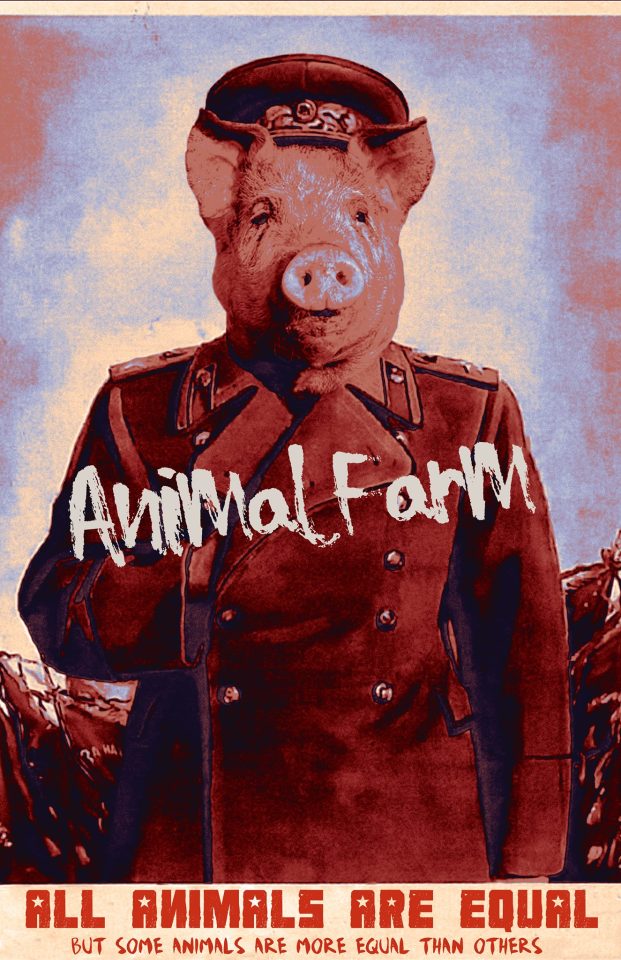
Dicho filme representa la corrupcion que puede presentarse en el gobierno de cualquier pais en como la corrupcion es algo que afecta el estado del pueblo y que quienes que estaba con el pueblo al pirncipio . Con el peso del poder y lo que este represnetan su juicio se puede ver nublado. Esta historia nos hace un llamado a tomar conciencia sobre a quienes elejimos como nuestros mandatarios a saber escoger y reconocer cuando nuestros derechos como ciudadanos son vulnerados.
Recuerda:La democracia debe ser el gobierno del pueblo por el pueblo y para el pueblo!
4 notes
·
View notes
Text

Kotan-kar-kamuy, the supreme Ainu creator god. Their name directly translates to Creator, Home maker, or World maker spirit. Kotan-kar-kamuy is said to have manifested the cosmos upon the back of a mighty trout. Kotan-kar-kamuy is also responsible for the creation of the Kamuy, mighty deities who govern over the many aspects of the world. Kotan-kar-kamuy is said to sit atop the hierarchy of the heavenly Kamuy. There has been whispers of a counter part to this great Kamuy, a dark and evil one who originates the dastardly kunne-kamuy, however this god’s origins are shrouded in mystery as even speaking about it can bring about its wrath. Kotan-kar-kamuy battled this demon when it consumed the sun Kamuy: Tokapcup-kamuy. Despite Kotan-kar-kamuy’s victory, every morning that same evil attempts to swallow the sun once more, but Kotan-kar-kamuy banishes the demon back into the abyss in the form of a flock of crows.
Kotan-kar-kamuy fills the supreme god mythological niche. But the unique thing about Kotan-kar-kamuy is that it also acts as a chief deity of sorts. While John Batchelor (a Christian missionary who studied and lived among the Ainu for many years) compared Kotan-kar-kamuy to the Abrahamic god, so much so that he even called the spirit god throughout most of his notes. I believe it’s more apt to compare it to the Zoroastrian Ahura Mazda, as an omnipresent god who’s subordinates are lesser deities draws more similarities between the two.
#Kotan-kar-kamuy#Kotan-kar#kamuy#kamui#art#character design#mythology#japan#ainu#ainu culture#creator god#creator deity#supreme god#supreme deity#chief god#deity#indigenous#ainu mythology
3 notes
·
View notes
Text
youtube
Automania 2000
John Halas and Joy Batchelor
UK, 1963
Another married couple making excellent films, Halas and Batchelor started out by making war information and propaganda shorts for Great Britain during WW2, and later made the famous animated adaptation of Animal Farm. More on that some other time- in this post I want to show you Automania 2000.
The year 2000 has come and gone- look, some of you are Noughties Kids, but I remember the fantastic dreams and predictions for the millenium. Everyone would have flying cars! We'd live on the moon!
Unfortunately Halas and Batchelor's anti-consumerist satirical prediction turned out more accurate. Well, it's not quite as bad as they drew it...yet. But if it seemed like cars and wasteful consumption of superfluous goods were starting to become a problem back in 1963, then 2022 is so much worse.
H&B make their point about reckless supply and manipulated demand using excellent graphics. The film artfully mixes the textures of paper cut outs and painted backgrounds with the clean colours of cel animation. Every frame is a little masterpiece of graphic design.
The dystopia is horrifyingly beautiful.
7 notes
·
View notes
Text
0 notes
Video
youtube
7 Keys to a Long Life with 100 Year Old Dr. John Scharffenberg & Doug Batchelor.
0 notes
Text
Meet Jack Foley, a smooth criminal who bends the law and is determined to make one last heist. Karen Sisco is a federal marshal who chooses all the right moves … and all the wrong guys. Now they’re willing to risk it all to find out if there’s more between them than just the law.
Credits: TheMovieDb.
Film Cast:
Jack Foley: George Clooney
Karen Sisco: Jennifer Lopez
Buddy Bragg: Ving Rhames
Maurice ‘Snoopy’ Miller: Don Cheadle
Glenn Michaels: Steve Zahn
Marshall Sisco: Dennis Farina
Adele Delisi: Catherine Keener
Kenneth: Isaiah Washington
Richard Ripley: Albert Brooks
José ‘Chino’ Chirino: Luis Guzmán
Moselle: Viola Davis
Bank Employee: Jim Robinson
Bank Customer: Mike Malone
Bank Teller: Donna Frenzel
Bank Cop: Manny Suárez
Bank Cop: Keith Hudson
Lulu: Paul Soileau
Pup: Scott Allen
Parking Lot Woman: Susan Hatfield
White Boxer: Brad Martin
Himey: James Black
Daniel Burdon: Wendell B. Harris Jr.
Library Guard: Chuck Castleberry
Shock Lock FBI Man: Chic Daniel
White Boy Bob: Keith Loneker
Old Elevator Lady: Connie Sawyer
Old Elevator Gent: Philip Perlman
Raymond Cruz: Paul Calderon
Officer Grant: Gregory Alpert
Ripley Personnel: Mark Brown
Ripley Receptionist: Sandra Ives
Ripley Guard: Joe Hess
Waitress: Betsy Monroe
Philip: Wayne Pére
Andy: Joe Chrest
Third Ad Guy: Joe Coyle
Midge: Nancy Allen
Ray Nicolette (uncredited): Michael Keaton
Hejirah Henry (uncredited): Samuel L. Jackson
Federal Marshal: Stephen M. Horn
Airport Patron (uncredited): Oscar A. Diaz
Waitress (uncredited): Jennifer Dorogi
Airport Passenger (uncredited): Deborah Smith Ford
Xenon Light Guard (uncredited): Mike Gerzevitz
Flight Attendant (uncredited): Thelma Gutiérrez
Bank Manager (uncredited): Wayne V. Johnson
Bank Patron (uncredited): Pati Lauren
Shopper (uncredited): Sherrie Peterson
Gas Station Attendant (uncredited): Ronnie Stutes
Film Crew:
Director: Steven Soderbergh
Producer: Danny DeVito
Executive Producer: Barry Sonnenfeld
Novel: Elmore Leonard
Screenplay: Scott Frank
Executive Producer: John Hardy
Producer: Michael Shamberg
Producer: Stacey Sher
Original Music Composer: David Holmes
Director of Photography: Elliot Davis
Editor: Anne V. Coates
Makeup Artist: Bill Corso
Digital Compositor: Sean MacKenzie
Second Assistant Director: Trey Batchelor
First Assistant Director: Gregory Jacobs
Second Second Assistant Director: Michael Risoli
Supervising Sound Editor: Larry Blake
Set Dresser: Mike Malone
Casting: Kathy Driscoll-Mohler
Casting: Francine Maisler
Production Design: Gary Frutkoff
Art Direction: Philip Messina
Set Decoration: Maggie Martin
Costume Design: Betsy Heimann
Makeup Artist: Margot Boccia
Key Hair Stylist: Bonnie Clevering
Makeup Artist: Anita Gibson
Key Makeup Artist: Katherine James
Hairstylist: Deborah Mills-Whitlock
Hairstylist: Waldo Sanchez
Makeup Effects Designer: David LeRoy Anderson
Hairstylist: Mary L. Mastro
Makeup Artist: Mark Shostrom
Unit Production Manager: Frederic W. Brost
Production Supervisor: Pat Chapman
Post Production Supervisor: Caitlin Maloney
Production Supervisor: Mary Morgan
Additional Second Assistant Director: David M. Bernstein
Second Second Assistant Director: William D. Robinson
Set Dresser: Shane L. Ashton
Set Dresser: Tristan Paris Bourne
Art Department Assistant: Andrea Brody
Leadman: Jon J. Bush
Set Designer: Lauren Cory
Set Designer: Keith P. Cunningham
Standby Painter: Chuck Eskridge
Property Master: Emily Ferry
Set Dresser: Harry Frierson
Construction Foreman: Gary Gagliardo
Paint Coordinator: Hank Giardina
Construction Foreman: William Gideon
Props: Brett Gollin
Assistant Property Master: Otniel Gonzalez
Set Dresser: L. David Gordon
Props: Charles Guanci Jr.
Art Department Coordinator: Blair Huizingh
Set Dresser: James E. Hurd Jr.
Paint Coordinator: Steven Kerlagon
Set Dresser: Alexander Kirst
Set Dresser: Chris Patterson
Leadman: David C. Potter
Set Designer: Mary Saisselin
Construction Coordinator: Chris Snyder
Assistant Property Master: Joy Taylor
Painter: Mark Woodworth
Carpenter: John Blanchard
Set Dresser: Kurt Braun
Painter: Tammy DeRuiter
Greensman: Michael ...
#bedroom#car trunk#diamond theft#elmore leonard#Heist#locked in trunk of car#prison escape#Top Rated Movies#u.s. marshal
1 note
·
View note